The Ozama, Discovered
Dr. E Lee Spence has just announced the discovery of United States steamer Ozama, found off the coast of South Carolina in 40 feet of water. The Ozama, formerly the British steamer Craigallion, was sunk in November of 1894 after striking shoals which led to the flooding of her fire rooms, rendering her engines useless.
The Ozama has a very interesting history, including being in the center of an international incident on one occasion and being involved in weapons smuggling on another. On still another voyage, she was used to transport hundreds of thousands of dollars, which, if it had been in gold (which it wasn’t), would have amounted to today’s equivalent of well over $25,000,000.
The Craigallion
The Ozama started life as the British steamer Craigallion, built in 1881 at Leith, Scotland. On May 17, she was launched from Ramage and Ferguson’s shipbuilding yard at Leith for Messrs. Walker, Donald and Co., Glasgow. The Marine Engineer of June 1, 1881, stated that “On leaving the ways the Craigaillon was named by Miss Glover, Mount Grange, Edinburgh, and was afterwards towed round to the harbour to receive her machinery.”
She made a number of voyages as the Craigallion, including the towing of one of the great dredges used in the construction of the Panama Canal, before drifting upon reefs and being listed as a total wreck.
The Ozama Is Born
It’s life as the Ozama began after it was towed from it’s wreck site to Nassau and then into Norfolk by the wrecking streamer Resolute. It was described as being in “fair condition, and is a very successful piece of wrecking work”. After salvage and repair the title to the vessel was purchased by William P. Clyde of New York, New York.
It served countless voyages along the east coast and into the Caribbean ferrying cargo and passengers, including the transfer of $300,000 to be reissued in Haiti. But it’s adventures weren’t limited to commercial cargo, mail, and other ‘official’ business as the Ozama took part in extensive gun running and smuggling to Haiti.
Gun Running
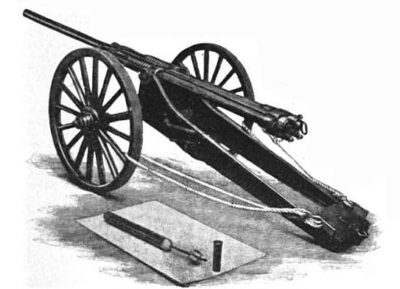
Dynamite Gun
4 Inch Dynamite Gun similar to the type that may have been transported on the Ozama
This entry dates from December 30, 1888, and tells of the steamer Ozama being used in the smuggling of arms to Haiti.
“The Clyde steamer Ozama sailed with her Gatling guns, rifles, and cartridges for Cape Haytien. She had as a passenger O.B. Carvalho, General Hippolyte’s nephew, who came here (New York) on the Saginaw to buy arms, it was reported. It is said on pretty good authority that Minister Preston notified Legitime by the Alvo of the sailing, advising that the shipment be kept out by force. The goods are marked Cape Hayti, but are cleared for Monte Christi, in San Domingo. It is said that the steamer will land the goods at Cape Haytien anyway, and run down any small boat that tries to prevent her.”
– The Sun, (New York, New York, USA), Volume 56, #121, December 30, 1888, p. 1, c. 5
Carrying Money
“A new issue of paper money has appeared in Cape Haytien, $300,000 being brought from New-York by the Ozama, March 9. It is propesed to withdraw the old issue. $1,000,000 is the amount of the new issue.”
– New York Times, (New York, New York, USA), April 4, 1889, “Hayti’s Rival Claimants”
It should be noted that the paper money brought in by the Ozama was not for her own use, but was cargo, and thought to be the first of $1,000,000 meant to replace a previous issue of paper money. The money was probably being replaced because the previous issue was issued by a previous regime, or because it had been devalued due to inflation or counterfeiting.
But, could there have been gold on board? Mercenaries (called Filibusters) who were supporting the overthrow of a government would not have accepted paper money because it could become worthless simply with the change of regime. There’s reason enough to believe that the Ozama could have carried Filibusters during many of it’s voyages to the Caribbean. And there are a number of reasons that it could have carried gold to help aid in the events transpiring in the region. As a matter of fact, in the same article reference above, it’s mentioned that the Legitime government had paid $80,000 in gold for the wood hulled steamship Carondelet, which they hoped to convert to a warship.
The Last Voyage of the Ozama
On November 23, 1894, the tug W.B. Congdon, picked up off the Georgetown Bar Captain Bennington and twelve men of the steamer Ozama, bound from Philadelphia to Charleston in ballast.
The Ozama was traveling “in ballast,” which generally (but not always) means without cargo. Vessels traveling “in ballast” often carried (as cargo opposed to mail) shipments of money and/or bullion for private companies, banks and/or governments. Because traveling “in ballast” meant there was no cargo to sell to generate money for the purchase of a return cargo, most vessels traveling “in ballast” carried sufficient money to purchase at least some sort of return cargo, if not for the owners at least for the captain.
In addition, because the death of Haiti’s president was considered imminent, the timing was certainly right for her carrying a significant quantity of money for either shoring up the existing regime, or for financing an insurrection. Such money would have needed to be in gold, not paper. The purpose of her voyage can only be guessed upon at this point.
At 7:30 p.m. on November 15th Captain Bennington reported that the Ozama struck on Cape Romain shoals and stove a hole in the engine room compartment. The water quickly filled the fire rooms, rendering the engines useless. The steamer floated off the shoals soon after striking, and at 3 a.m. sank in six and one half fathoms of water. The crews took to the boats, saving only part of their clothing. The engineer with ten men went off to board the steamer Planter from Charleston but missed her and it was thought they landed “on Romaine beach”.
The loss of the Ozama was mentioned as “among the notable American marine disasters of the year” (1894), the others being the foundering of the steamer Colima; the loss of the Kewenaw, reported missing with thirty-one lives; the stranding of the Cienfuegos; and the loss of the steamer Chicora on Lake Michigan.
[1][1] Omaha Daily Bee, (Omaha, Nebraska, USA), July 4, 1895, p. 1, c. 4
The Future of the Ozama
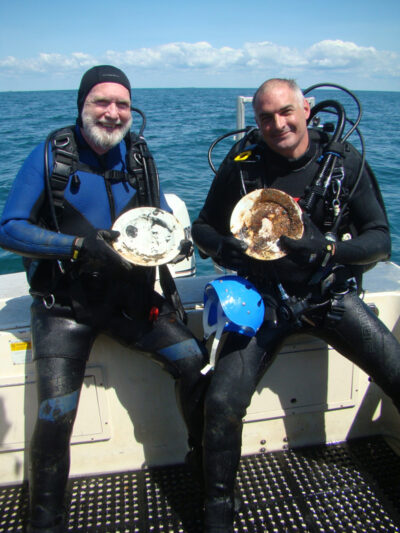
An effort is now underway by the salvage company, Spence Trust Inc., funded by United Gold Explorations Limited, to locate and salvage the steamer’s safe(s) and any valuable cargo that might be on the wreck. Their plan is to leave the rest of the wreck in situ to be used for teaching both underwater archaeology and commercial diving. That training will probably be done as a joint venture between the Sea Research Society, a non-profit, educational research organization, and the International Diving Institute, a commercial diving school headquartered in Charleston.

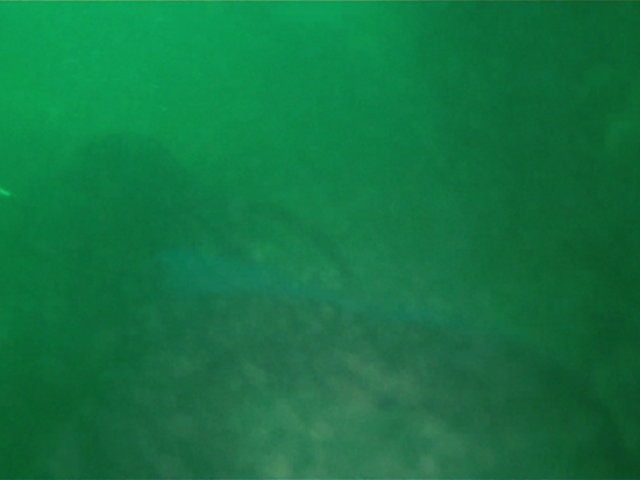
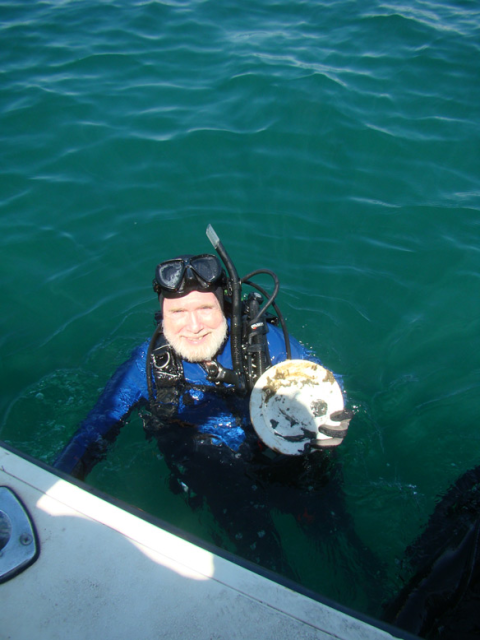
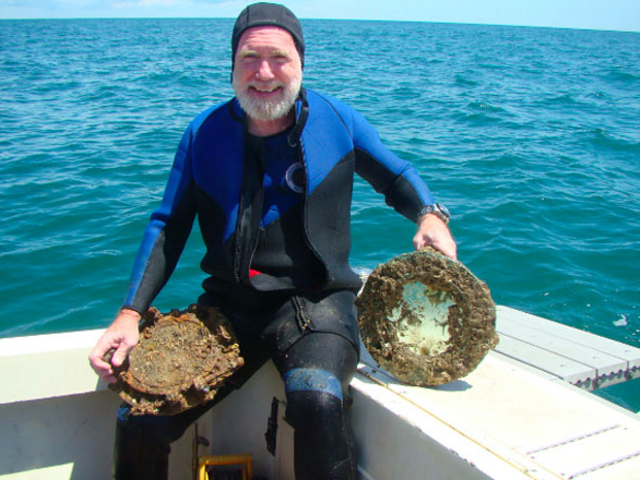
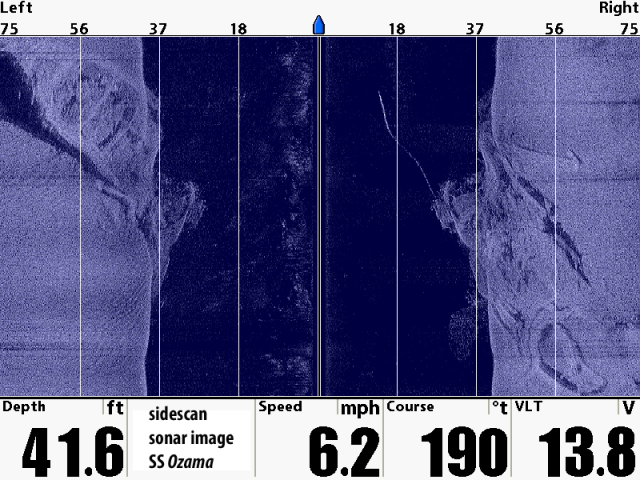


Leave A Comment